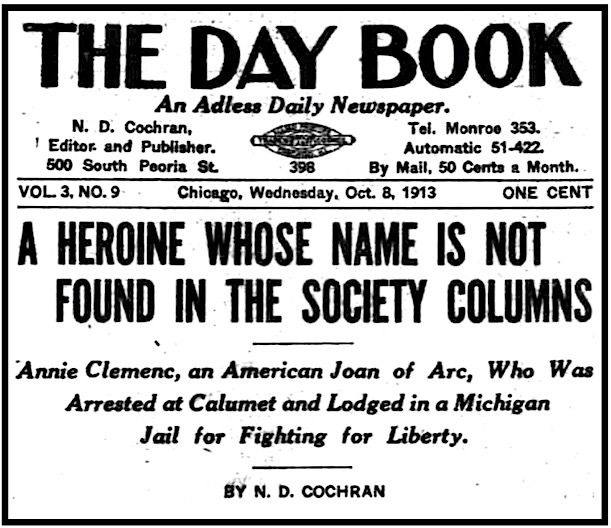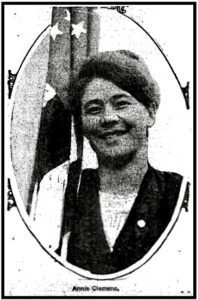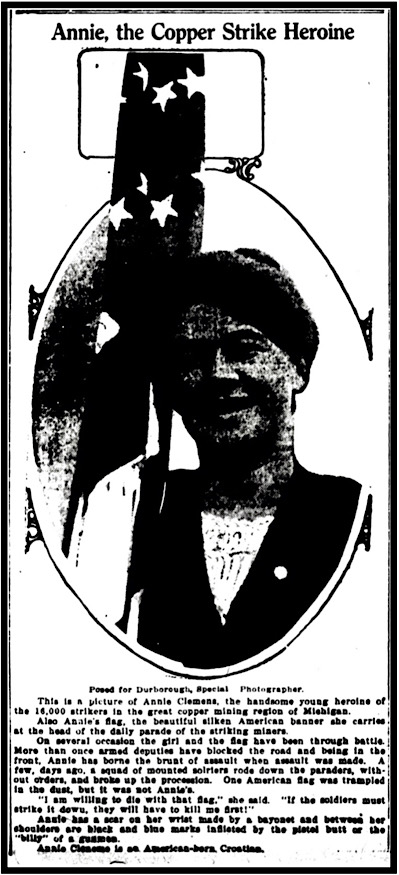MOVIES SHOW GHASTLINESS OF CALUMET’S
RECENT FIRE CATASTROPHE
[by Editor N. D Cochran]
[Note: There was no fire; the stampede to the stairway was caused by a man, wearing a Citizens Alliance button, who intentionally raised a false alarm of fire.]

There were two exhibitions of the moving pictures of the funeral of the victims of the Christmas eve disaster in Calumet yesterday.
In the little hall up three flights of stairs on North Clark street the picture received its baptism.
Its sponsors were two members of the Western Federation of Miners, three motion picture operators-one of whom had taken the picture-a picture producer, two newspapermen and an express wagon driver who had wandered into the darkened, bare hall, and stayed to watch the film unreeled, held by the power of the spectacle presented.
In the comments of the spectators was revealed the appeal of the picture.
Scenes of disaster, of misery and suffering were no strangers to those present. But the pathos of the picture pierced the veneer of cynicism and struck home.
With a flare and sputter the picture flashed on the little screen, revealing the church at which the service for the 57 victims buried was held.
Hundreds milled around the doors struggling to gain an entrance. Children predominated in the crowd, seeking to pay a final tribute to their playmates, whose lives had been so needlessly crushed out because someone had made a fatal blunder or worse.
A fine snow was falling, and the streets were covered with white. But the picture was wonderfully clear.
“Good stuff,” commented one of the picture men. “Notice how those buildings in the background stand out?”
An interurban car wormed, its way through the crowd which choked the street.
“H–l! Don’t them street car people there care nothing for a funeral,” came from the expressman, not conscious that he was speaking aloud.
A quick change in the picture, and the first coffin was brought from the church door. It was white and small. Nearly all of the coffins were white and small.
On the shoulders of four men the little box was borne down the steps of the church and placed in a waiting hearse. Another followed. And then another. They came in such quick succession that they could not be counted.
The supply of hearses ran out. And then came the most moving part of the picture. Two squads of four men each were assigned to a coffin and the coffin was carried aloft on their shoulders. When one squad tired another leaped to take its place.
A second street car sundered the head of the cortege as it started on its long march to the burying ground.
A quick transformation, and the scene changed to the funeral procession nearing the cemetery. Down the narrow ribbon of road it came, across the plain from Calumet. The road was a mass of black against the snowy wastes of the surrounding country.
Hearse after hearse passed. Some of the bodies were conveyed in sleighs. And then came the men marching with the coffins on their shoulders. They were carried two abreast.
Across the sky line was a smudge of smoke from one of the Calumet & Hecla mines. While the strikers were burying their dead the work of the mines went on. In the foreground loomed the shaft of the Red Jacket mine, where, many of the men had toiled before they went on strike.
“That sky line stuff is great,” commented one of the picture, operators “You can see people clear back to the town, and it must be a couple of miles away.”
“Yet they say there are only 3,000 of us on strike,” muttered Yanco Terzich, member of the miners’ union, who has guarded the film since it was brought from Calumet. “Look at those people. There are 15,000 in line. There would have been more, but they didn’t have the railroad fare. They have to eat.”
Following the last coffin came the women, the mothers of the children whose bodies were being borne on ahead. In a solid mass they marched, thousands of them. Many were weeping. Children clung to their hands, sobbing for sisters or brothers who were lying in the little white caskets carried on the shoulders of the men.
And then came the strikers. They were grim, tight-lipped, looking straight ahead toward the burying ground. At their head was a woman carrying an American flag shrouded in black.
Anarchists these men have been called. But they marched behind the flag that the militiamen had tried to take from them. They did not look like anarchists. They seemed to be very ordinary men, bundled in their fur caps and great coats.
On they came. When the head of the procession reached the cemetery the rear was still resting in the city.
A close view of the two trenches in which the bodies were laid was thrown on the screen. Up above the strikers stood Annie Clemenc, girl leader of the miners. She was not the usual militant Annie Clemenc. She was saying a prayer for the children.
The picture machine sputtered and the screen went dark. The reel of film had been run.
“That’s great stuff,” said one of the reporters. “But how are you going to write about it? How can you make people feel that picture by hammering a typewriter. They’ve got to see it. It’s too big for me.”
And it is too big. You do have to see it. It is like nothing ever pictured before.
Later the film was taken to the city hall to be passed on by the board of censors, of which Police Sergt. Jerry O’Connor is chief.
It was run so they might approve, which they did.
“There’s nothing harmful in that picture,” was O’Connor’s verdict. “But I think it is too long.”
It is too long-too pitifully long-though not in the way O’Connor meant.
[Photograph and emphasis added.]
 —————
—————
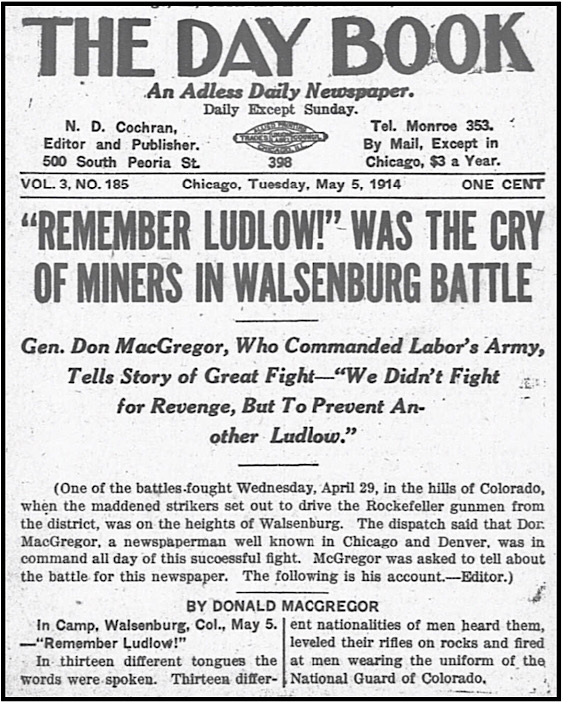
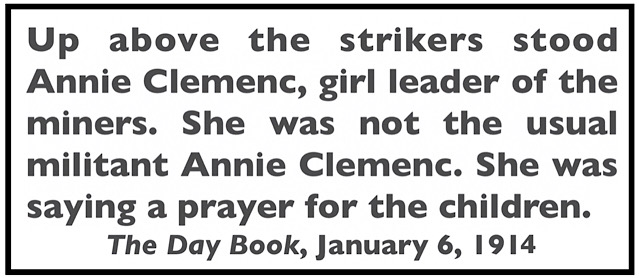 —————
—————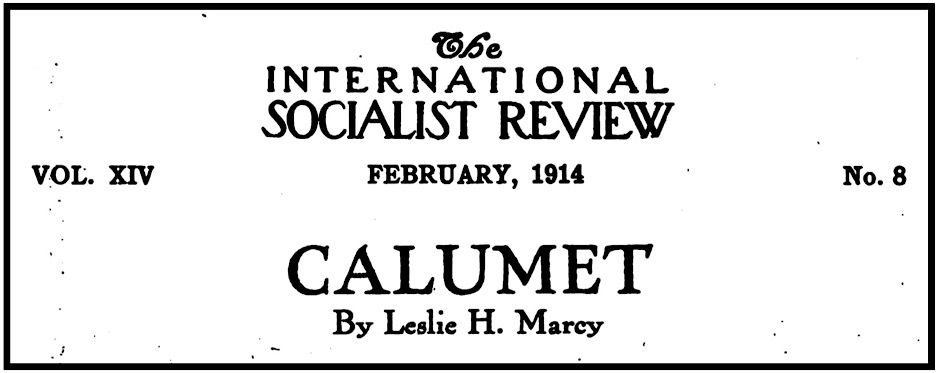
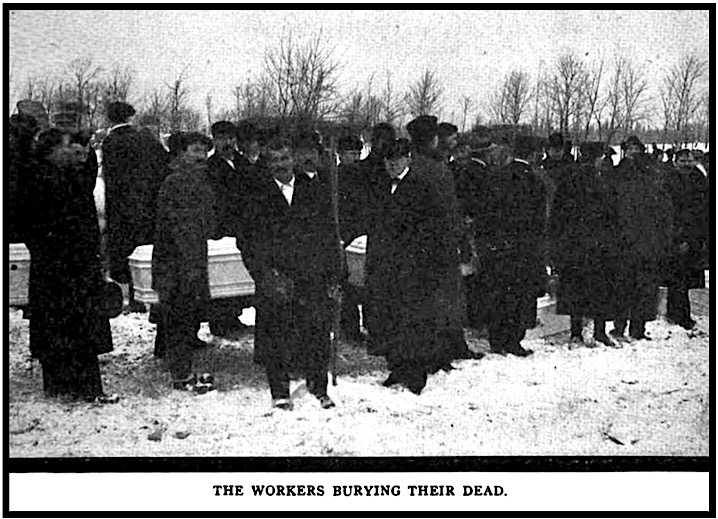

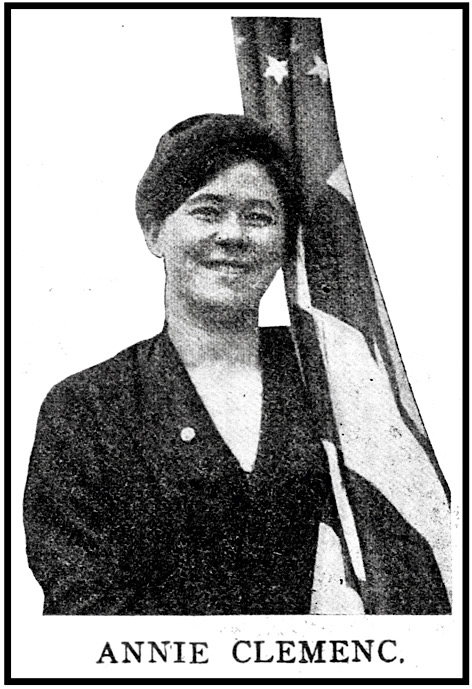
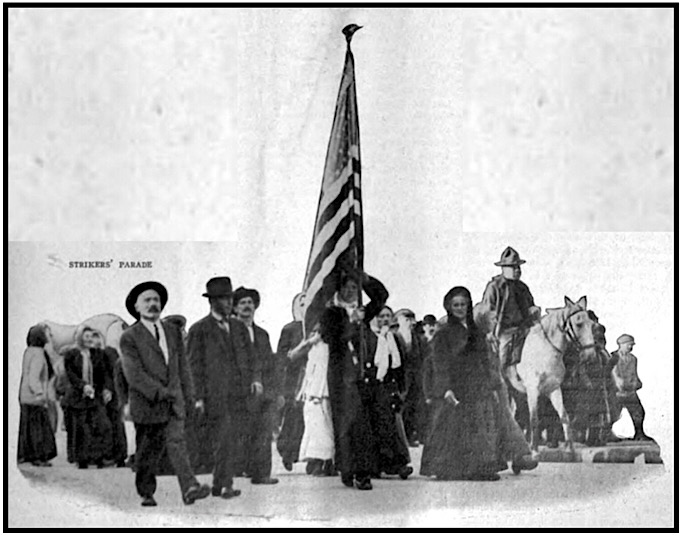
 —————
—————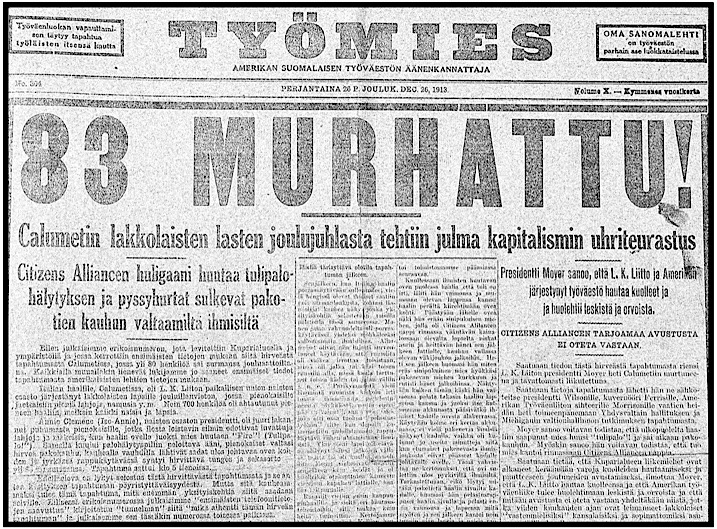
 —————
—————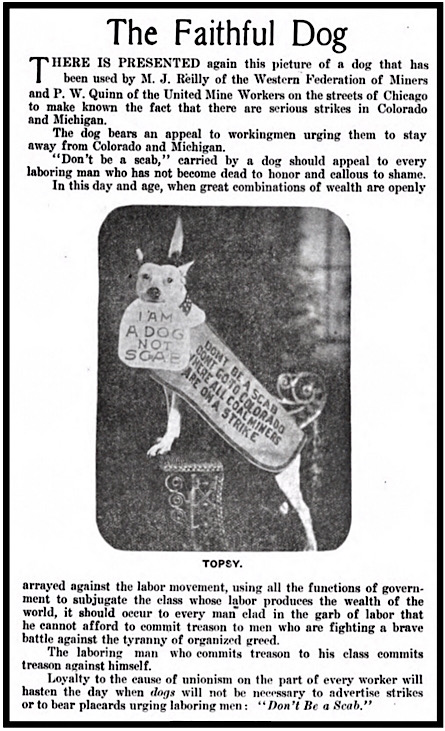
 —————
—————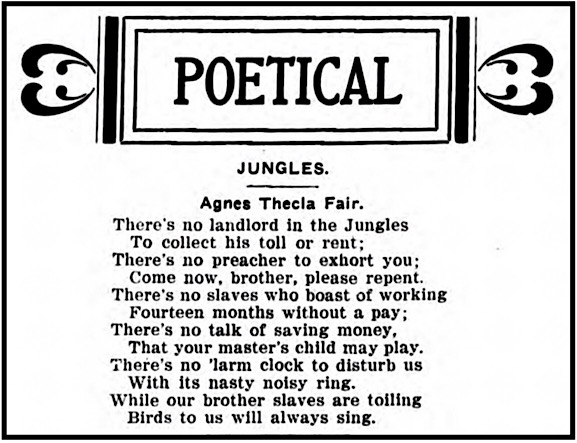
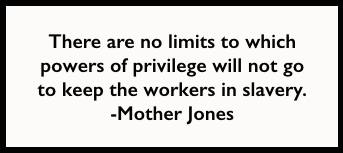 —————
—————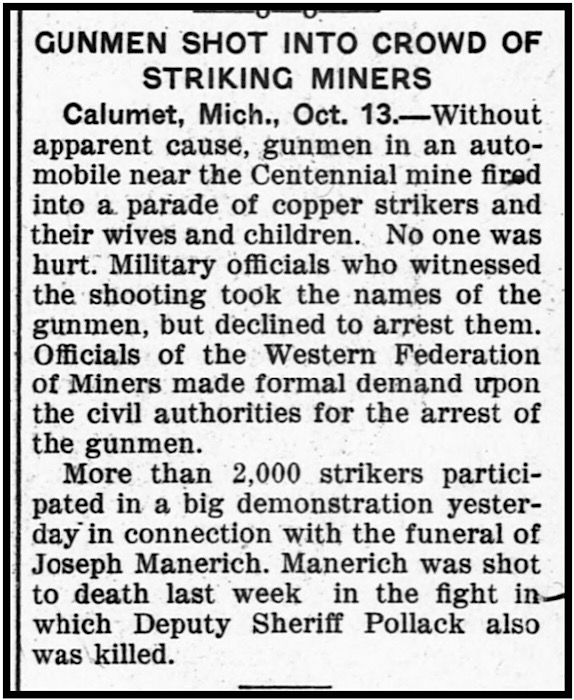
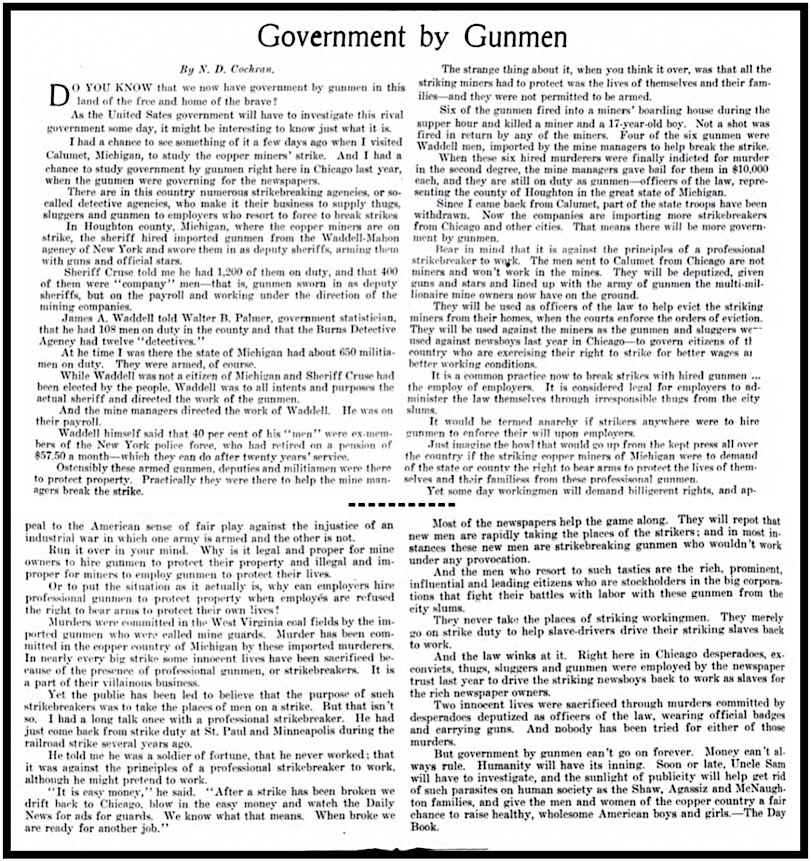
 —————
—————